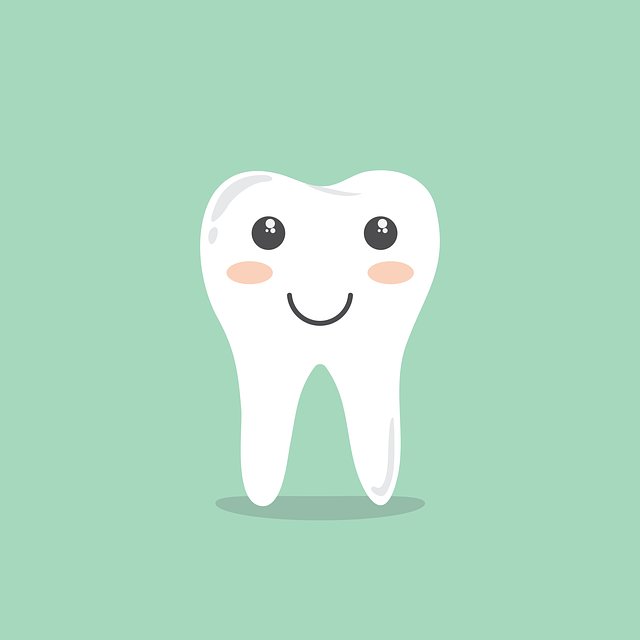Small Gaps, Big Solutions: Can Retainers Close Small Gaps?
Are small gaps between your teeth causing big concerns? If you’ve been plagued by those tiny spaces that seem to detract from your otherwise perfect smile, you may be wondering if there’s a solution that doesn’t involve braces or invasive dental procedures. Look no further than retainers – those trusty mouthpieces that have long been associated with maintaining the results of orthodontic treatment. But can these unassuming devices actually close small gaps? In this article, we delve into the world of retainers to uncover the truth behind their gap-closing abilities, providing you with a confident and knowledgeable perspective on this intriguing topic. So, let’s unravel the mystery and discover if retainers hold the key to achieving your desired smile.
1. Understanding the Impact of Small Gaps in Orthodontics
Small gaps in orthodontics can have a significant impact on the overall treatment outcome. While they may seem insignificant, these gaps can lead to various complications and hinder the desired results. It is crucial to understand the implications of these gaps to ensure successful orthodontic treatment.
Here are some key points to consider when it comes to small gaps in orthodontics:
- Alignment Issues: Even a small gap between teeth can disrupt the alignment of the entire dental arch. This misalignment can affect the way you bite, chew, and speak, leading to discomfort and potential long-term issues.
- Stability Concerns: Small gaps can compromise the stability of neighboring teeth. The surrounding teeth may shift or tilt into the gap, causing further misalignment and creating additional gaps. This can make future orthodontic treatment more complex and time-consuming.
- Aesthetic Impact: Small gaps can significantly impact the appearance of your smile. Even if the gaps are barely noticeable, they can affect your self-confidence and willingness to smile freely. Addressing these gaps is essential for achieving a beautiful and harmonious smile.
is vital for both patients and orthodontic professionals. By recognizing these potential issues, appropriate measures can be taken to prevent complications and ensure the best possible treatment outcome.

2. The Role of Retainers in Closing Minor Dental Gaps
Retainers play a crucial role in closing minor dental gaps, providing a non-invasive and effective solution for achieving a straighter smile. These custom-made devices are typically worn after orthodontic treatment, such as braces or aligners, to maintain the results and prevent any shifting of the teeth.
Here are some key points to understand about the role of retainers:
- Stabilizing the teeth: Retainers help stabilize the teeth in their new positions, allowing the surrounding tissues and bone to adapt to the changes. This ensures long-term stability and prevents the teeth from shifting back to their original positions.
- Closing minor gaps: Retainers can effectively close minor gaps between teeth by applying gentle pressure. This is especially beneficial for individuals who have experienced relapse or have small spaces remaining after orthodontic treatment.
- Maintaining alignment: By wearing retainers as recommended by your dentist or orthodontist, you can maintain the alignment of your teeth and preserve the results of your orthodontic treatment.
Overall, retainers are an essential part of any orthodontic treatment plan, ensuring that the teeth remain in their desired positions and offering a long-lasting solution for minor dental gaps.

3. Exploring the Effectiveness of Retainers in Addressing Small Gaps
When it comes to addressing small gaps in teeth, retainers have been widely used and have shown promising results. Retainers are orthodontic devices that are custom-made to fit the patient’s teeth and are typically made of plastic or metal wires. They are designed to hold the teeth in their corrected position after orthodontic treatment, preventing any relapse or shifting.
Retainers have proven to be an effective solution for closing small gaps in teeth for several reasons. Firstly, they provide a constant gentle force on the teeth, gradually bringing them closer together and closing the gaps. This force helps to align the teeth and maintain their position over time. Secondly, retainers are versatile and can be used in various situations. They can be customized to address specific gaps and can be worn both during the day and at night, based on the individual’s needs. Moreover, retainers are a non-invasive option that does not require any additional dental procedures, making them a popular choice among patients. Overall, retainers have demonstrated their effectiveness in correcting small gaps in teeth and ensuring a lasting result.

4. A Closer Look at the Science Behind Retainers and Tooth Movement
Retainers play a crucial role in maintaining the results achieved through orthodontic treatment. But have you ever wondered how they actually work? Let’s take .
To understand the science behind retainers, it’s important to first understand how teeth move. Teeth are not directly fixed to the bone; instead, they are surrounded by a periodontal ligament. This ligament acts as a cushion and allows for controlled tooth movement. During orthodontic treatment, braces or aligners exert gentle pressure on the teeth, causing the ligament to remodel and the teeth to gradually shift into their desired position.
- Types of retainers: There are two main types of retainers: removable and fixed. Removable retainers are made of clear plastic and can be easily taken out for cleaning. On the other hand, fixed retainers consist of a wire bonded to the back of the teeth, offering a more permanent solution.
- Retainer maintenance: Regardless of the type of retainer, proper maintenance is crucial. Removable retainers should be cleaned daily using a toothbrush and mild soap to prevent the buildup of bacteria. Fixed retainers require regular dental visits to ensure they remain intact and effective.
By wearing retainers after orthodontic treatment, the teeth are given time to settle into their new positions and the ligament is allowed to stabilize. This is crucial because the ligament takes longer to adapt to the new tooth alignment compared to the bone. Without the use of retainers, the teeth may shift back to their original positions, undoing all the hard work of orthodontic treatment.
Understanding the science behind retainers and tooth movement reinforces the importance of wearing retainers as prescribed by your orthodontist. By doing so, you can ensure a lasting and beautiful smile!

5. Realizing the Potential: How Retainers Can Close Small Gaps
Retainers are a powerful tool in orthodontics, capable of closing small gaps and helping patients achieve their desired smile. By applying gentle pressure to the teeth, retainers gradually move them into the desired position, effectively closing any small gaps that may be present. This makes retainers an excellent option for individuals who have already undergone orthodontic treatment but still have minor spacing issues.
One of the key advantages of using retainers to close small gaps is their convenience. Unlike braces or aligners, retainers are removable, allowing for easy cleaning and maintenance. Patients can simply take out their retainer when eating, brushing, or flossing, making it a hassle-free option. Additionally, retainers are often more affordable than other orthodontic treatments, making them a cost-effective solution for minor spacing concerns. With regular wear as prescribed by the orthodontist, patients can expect to see gradual improvement and the eventual closure of small gaps.
6. Retainers vs. Other Orthodontic Treatments: Which Is Best for Closing Small Gaps?
When it comes to closing small gaps in your teeth, there are a few orthodontic treatment options to consider. Retainers and other orthodontic treatments can both be effective in achieving the desired results. However, it’s important to understand the differences between the two to determine which is best for your specific needs.
Retainers are typically used after braces or other orthodontic treatments to maintain the alignment of your teeth and prevent them from shifting back into their original positions. They are custom-made to fit your mouth and are usually worn at night or for a few hours each day. Retainers can be a great option for closing small gaps as they help to hold the teeth in their new positions and ensure that they stay aligned over time.
- One of the main advantages of retainers is that they are removable, making it easier to clean your teeth and maintain good oral hygiene.
- Retainers are also less noticeable compared to other orthodontic treatments, such as braces.
- They are generally more comfortable to wear as they do not involve any wires or brackets.
On the other hand, other orthodontic treatments like braces or clear aligners may be recommended for closing small gaps depending on the severity of the spacing issue. Braces use brackets and wires to gradually move the teeth into their desired positions. Clear aligners, on the other hand, are custom-made plastic trays that are worn over the teeth and gradually shift them over time.
- Braces are often recommended for more complex cases or when there are multiple gaps that need to be addressed.
- Clear aligners, such as Invisalign, are a popular alternative to braces as they are virtually invisible and can be removed for eating and brushing.
- Both braces and clear aligners require regular visits to the orthodontist for adjustments and monitoring of progress.
Ultimately, the best orthodontic treatment for closing small gaps depends on various factors including the severity of the spacing issue, your oral health, and your personal preferences. Consulting with an orthodontist will help determine the most suitable option for you and ensure that you achieve the desired results.
7. The Future of Orthodontics: Leveraging Retainers for Seamless Gap Closure
In the field of orthodontics, advancements are constantly being made to improve the effectiveness and convenience of treatment options. One such development that holds great promise is the leveraging of retainers for seamless gap closure. This innovative approach aims to address the common issue of gaps between teeth, providing patients with a more efficient and comfortable solution.
By incorporating cutting-edge technology and materials, orthodontists can now design custom retainers that apply gentle and consistent pressure to gradually close gaps. These retainers are made to fit snugly over the teeth, ensuring optimal contact and movement. Unlike traditional braces or aligners, which require regular adjustments or replacements, retainers offer a discreet and low-maintenance alternative. Patients can confidently wear their retainers throughout the day without any disruption to their daily routine.
- Seamless gap closure with retainers eliminates the need for more invasive and time-consuming procedures such as dental bonding or veneers.
- The gradual pressure exerted by the retainers helps to align the teeth and close gaps in a controlled and predictable manner.
- Retainers can be customized to address individual dental needs, ensuring a personalized treatment plan for each patient.
- The use of retainers for gap closure is suitable for both minor and more significant gaps, offering a versatile solution for a wide range of orthodontic cases.
With the future of orthodontics focusing on leveraging retainers for seamless gap closure, patients can look forward to a more convenient and efficient treatment experience. Say goodbye to unsightly gaps and hello to a confident, beautiful smile.
Frequently Asked Questions
Q: Can retainers effectively close small gaps in teeth?
A: Absolutely! Retainers have proven to be an effective solution for closing small gaps in teeth.
Q: How do retainers work to close gaps?
A: Retainers work by applying gentle pressure on the teeth, gradually moving them together and closing the gaps.
Q: Are retainers suitable for everyone?
A: Retainers are suitable for individuals with small gaps between their teeth who do not have any underlying dental issues. It is always advisable to consult with a dentist to determine the best treatment option for your specific case.
Q: Do retainers require a long treatment duration?
A: The treatment duration can vary depending on the severity of the gaps. In most cases, however, retainers can effectively close small gaps within a few months.
Q: Are retainers comfortable to wear?
A: Yes, retainers are designed to be comfortable when worn. At first, you may experience some mild discomfort or tightness, but this will subside as your teeth adjust to the pressure.
Q: Can retainers be removed?
A: Yes, retainers are typically removable, allowing you to take them out during meals or when cleaning your teeth. However, it is important to wear them consistently as instructed by your dentist for the best results.
Q: Will the gaps reopen after the treatment?
A: It is possible for gaps to reopen if retainers are not worn as instructed by your dentist. It is crucial to follow the guidelines provided to prevent any regression in the treatment.
Q: How do retainers compare to other teeth gap-closing methods?
A: Retainers are a non-invasive and cost-effective option for closing small gaps in teeth. They are often preferred over more invasive procedures like braces or aligners for individuals with minor spacing issues.
Q: Can retainers be used in combination with other dental treatments?
A: Retainers can be used in conjunction with other dental treatments depending on the specific case. Consult with your dentist to determine the best treatment plan for your specific needs.
Q: Are there any risks or side effects associated with using retainers?
A: When used as directed, retainers are generally safe and do not pose any major risks or side effects. However, some individuals may experience temporary discomfort or difficulty speaking initially, but these issues typically resolve quickly.
Q: Is it necessary to wear retainers indefinitely after the gaps are closed?
A: Your dentist will provide guidance on how long you need to wear retainers. In some cases, wearing retainers at night may be recommended to maintain the results achieved and prevent any relapse.
To Conclude
In conclusion, it is clear that retainers can indeed be effective in closing small gaps in teeth. This non-invasive and cost-effective solution offers numerous benefits to individuals seeking minor orthodontic corrections. By applying gentle pressure, retainers can gradually shift teeth into their desired positions, resulting in a more aligned and aesthetically pleasing smile.
Key takeaways from this article include:
1. Retainers are a viable option for closing small gaps in teeth. They provide a non-surgical and affordable alternative to more extensive orthodontic treatments.
2. Retainers work by applying constant, gentle pressure on the teeth, gradually guiding them into the desired position over time.
3. It is essential to consult with a qualified orthodontist or dentist to determine if a retainer is suitable for your specific dental needs.
4. Compliance is crucial for successful results with retainers. Consistently wearing the retainer as instructed by your dental professional is vital to achieving the desired outcome.
5. Retainers may not be suitable for individuals with more significant dental misalignments or complex orthodontic issues. In such cases, alternative treatments, such as braces or aligners, may be recommended.
In summary, when it comes to closing small gaps in teeth, retainers offer a convenient, affordable, and effective solution. By following the guidance of your dental professional and committing to consistent use, you can achieve a more harmonious and confident smile.






